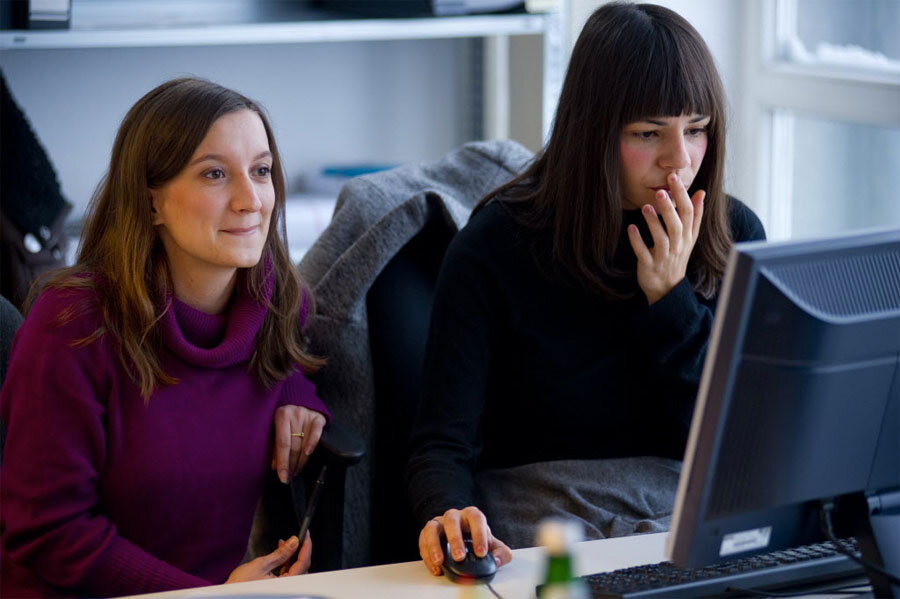Gender gap has narrowed in more than 100 countries
Loading...
A small but growing number of women have entered politics and the global workforce over the past decade, a trend that has helped narrow the gender gap in 105 countries.
Nations from Guatemala to Nepal have made significant gains in gender equality in recent years. Many have reduced wage gaps, increased female college enrollment, and expanded the role of women in government. Still, a report released in October by the World Economic Forum (WEF) shows that, as a whole, the world has far to go. It estimates that complete gender equality in economic participation and opportunity remains decades away.
That’s at least partly attributable to the lingering divide between women’s educational achievements and their economic gains, says Ricardo Hausmann, director of the Center for International Development at Harvard University.
“Closing the gaps in education is an area where the world has made enormous progress,” says Dr. Hausmann, who contributed to the WEF report. “Incorporating women into good, well-paying jobs has been much more of a challenge.”
The global gender gap for economic participation and opportunity stands at 60 percent, having closed 4 percent since the WEF first measured it in 2006. More women than men have entered the labor force in 49 countries over the past decade. It’s been a monumental shift, but one that remains far from breaking the corporate glass ceiling.
Experts say that until labor laws adapt to better meet women’s needs, their economic progress will likely keep happening in baby steps rather than giant leaps. Hausmann argues that reform is needed in areas such as workplace flexibility and child care to better accommodate them.
“More gender-sensitive labor legislation is still something on the to-do list,” he says, adding that businesses need to think of better ways to help female employees balance their professional and private lives.
Meanwhile, the gender gaps for health and survival – which reflect life expectancies and birthrates – and educational attainment are both more than 90 percent closed worldwide. Thirty-five countries have closed the health gap entirely and 25 have done the same in education.
Women’s position in politics lags furthest behind. The gender gap for political empowerment is a meager 21 percent, according to the WEF, even though it’s seen the most gains since 2006. There are now 29 percent more female parliamentarians and 50 percent more female ministers across the world than there were nine years ago.
As with many global wellness indicators, Nordic countries dominate the WEF rankings. Iceland, Finland, Norway, Sweden, and Denmark top the list. But three nations stand out in an otherwise predictable Top 10 list: Nicaragua (6), Rwanda (7), and the Philippines (9). That they rank just behind Northern Europe, on par with Ireland (8) and Belgium (10), and well ahead of the United States (20) is a testament to their achievements in closing the gender gap.
Nicaragua’s success lies in improvements it’s made in education and health. Continued progress in those areas – most notably the growing female enrollment rate across all grade levels, including college – has allowed Nicaragua to remain in the top 10 for the past three years.
Female political empowerment has enabled Rwanda to close its gender gap. The sub-Saharan African nation is the only country with more women in its Parliament than men. Women hold 64 percent of the seats, having kept a majority since 2008.
The Philippines has shown significant progress in economic participation. Sixty-nine percent of firms in the Southeast Asian nation are at least partially owned by women, the highest rate of any country. The Philippines also ranks second in the world in women’s ability to reach corporate leadership positions.
While the gender gap has narrowed in an overwhelming majority of countries, six have seen prospects for women decline: Sri Lanka, Mali, Croatia, Macedonia, Jordan, and Tunisia.
One of the most entrenched problems women face is income inequality, says Martha Chen, a lecturer at Harvard University who studies gender and poverty. She says the gap is often irrelevant to the world’s poorest women, who, like their male counterparts, are simply trying to survive.
“If the gender gap is narrowing, it doesn’t mean that working poor women are doing better,” she says.





